Torlonia Marbles exhibition inaugurated yesterday in the renovated venue of Villa Caffarelli at the Capitoline Museums.
After many years, Rome embraces one of the most important collections of ancient statuary in the world.
We were among the very first to visit the exhibition and it’s a pleasure to share our impressions with you!
The Torlonia Marbles Exhibition: from the long oblivion to the international attention
After long years of oblivion, the Torlonia Marbles finally come back to see the light.
The historic event has created a great echo at an international level and coincides with the reopening of the museum rooms of Villa Caffarelli, redesigned for the occasion by the Chipperfield studio, thanks to the initiative of the Sovrintendenza di Roma Capitale.
In short, a fruitful collaboration between public and private that gives Rome and the world a truly unique exhibition.
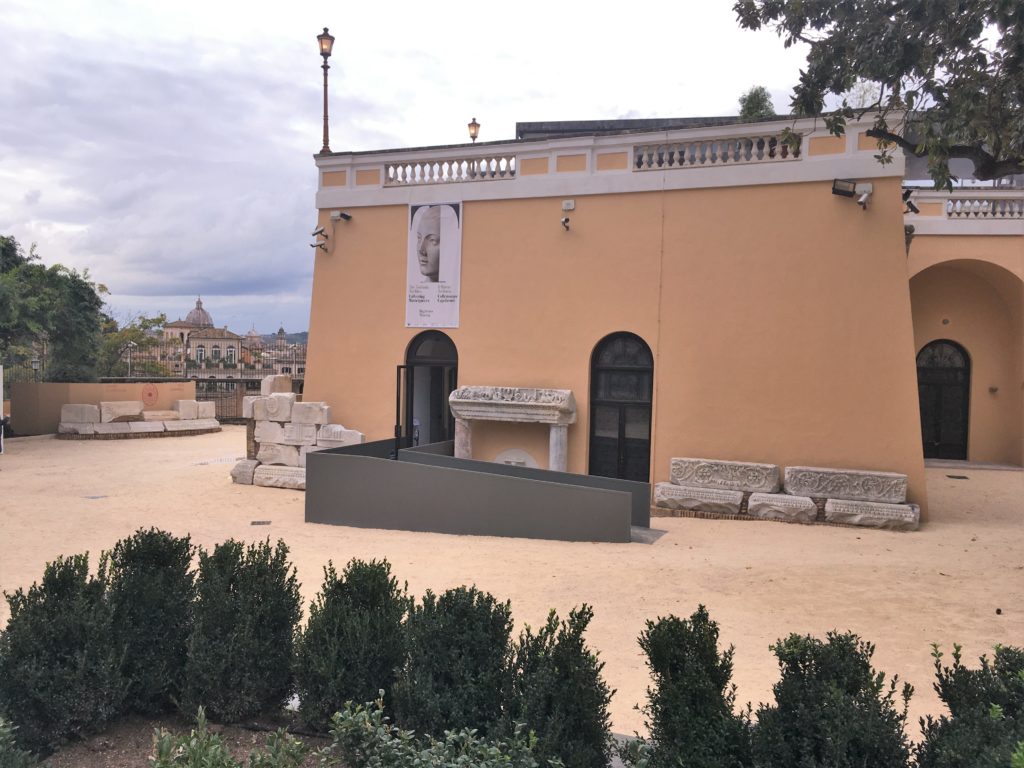
Before entering the renovated rooms of Villa Caffarelli, let’s retrace the history of the Torlonia Marbles together.
The collection dates back to 1700-1800, when Giovanni Torlonia and then his son Alessandro bought precious works of Graeco-Roman art and then entire collections from other noble families (on display are – among the others – unique pieces from the Giustiniani, Albani and Cavaceppi collections).
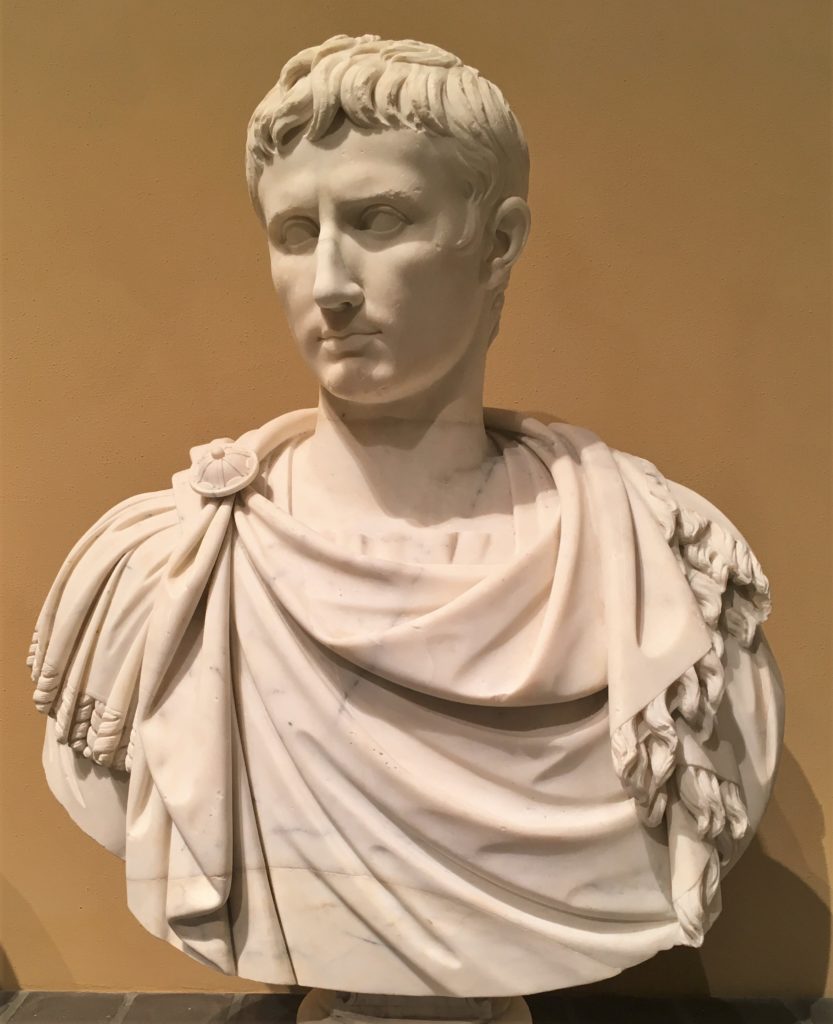
Many other works, then, were found thanks to the systematic excavation campaigns conducted by the Torlonia family, which over the centuries has shown a great attention to art and archeology (together with an innate flair for business).
In addition to the estates of Sabina and Tuscia regions, excavations were carried out along the Appian Way, the Via Latina and in the Porto area, where the Torlonia family has acquired numerous possessions over time, many of which are still in its possession.
During the 19th century hundreds of masterpieces were found, which then went on to enrich the already large collection of ancient art of Villa Albani (purchased by the Torlonia family in 1866).
In the meantime, other works were destined for the “Museum of Ancient Sculpture” in Via della Lungara, opened in 1875 in a former grain warehouse (closed for unclear reasons in the 1960s).
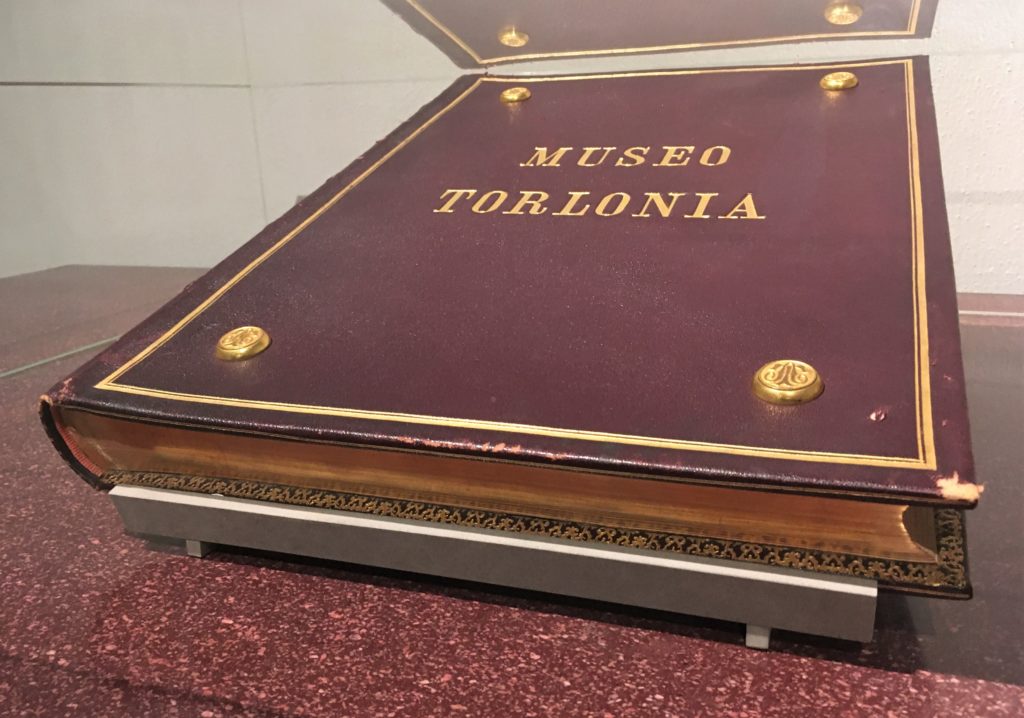
From the 1960s onwards, various projects have been advanced for a new permanent location of the Torlonia collection, but for bureaucratic reasons none of these projects have seen the light. So the Torlonia marbles have been slumbering in the family deposits for sixty years.
The situation was released recently – on the impulse of the Fondazione Torlonia, established in 2014 – and part of the marbles (92 out of 620 total) have been restored and are now on display at Villa Caffarelli on the Campidoglio.
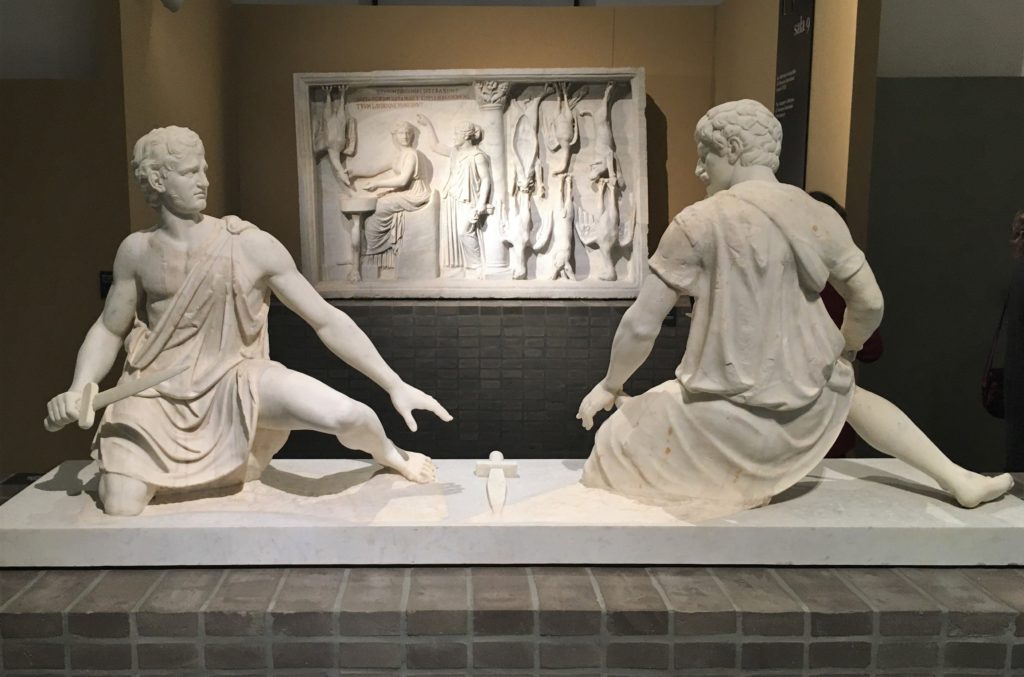
Torlonia collection masterpieces on display in Rome
The “Torlonia Marbles” exhibition is the result of an agreement between the Ministero per i beni e le attività culturali e per il turismo and the Torlonia Foundation.
The 92 Marbles have been restored with the contribution of Bvlgari, which is also the main sponsor of the exhibition.
The exhibit is divided into 5 sections spread over 14 rooms, and the itinerary ends on the marvelous Esedra of Marcus Aurelius at the Capitoline Museums.
Among the works on display stand out precious busts from the Roman era, which provide an exceptional photograph of the imperial statuary between the 1st and 3rd centuries AD.
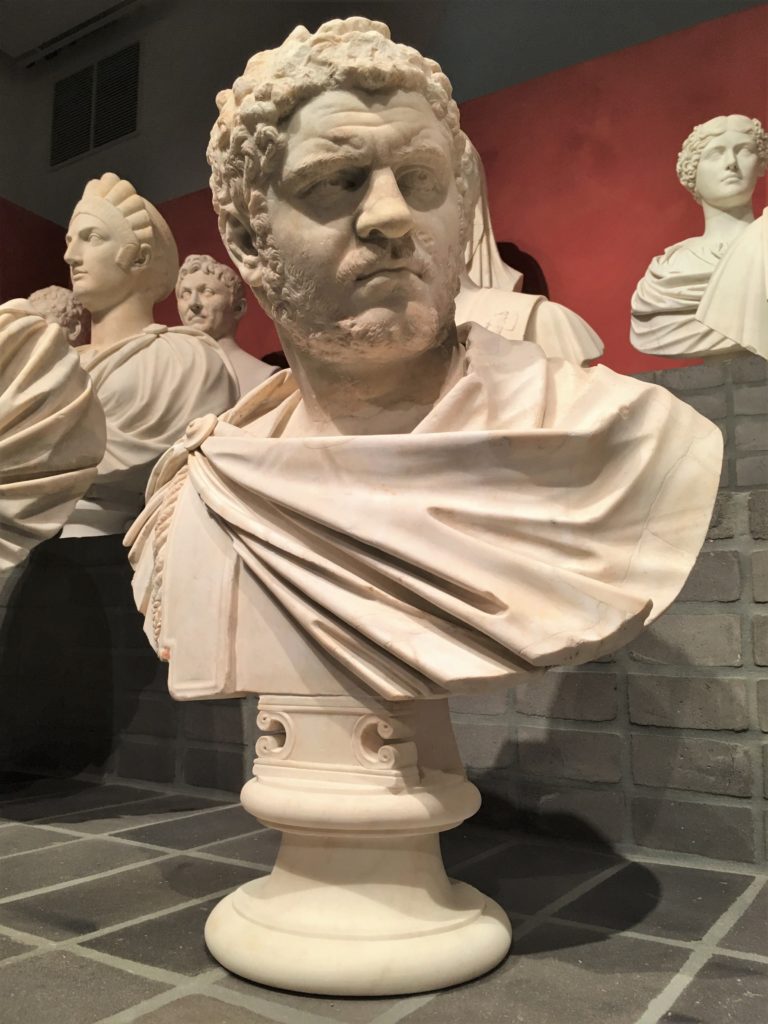
Mythological subjects decorate imposing sarcophagi, sumptuously inlaid in marble.
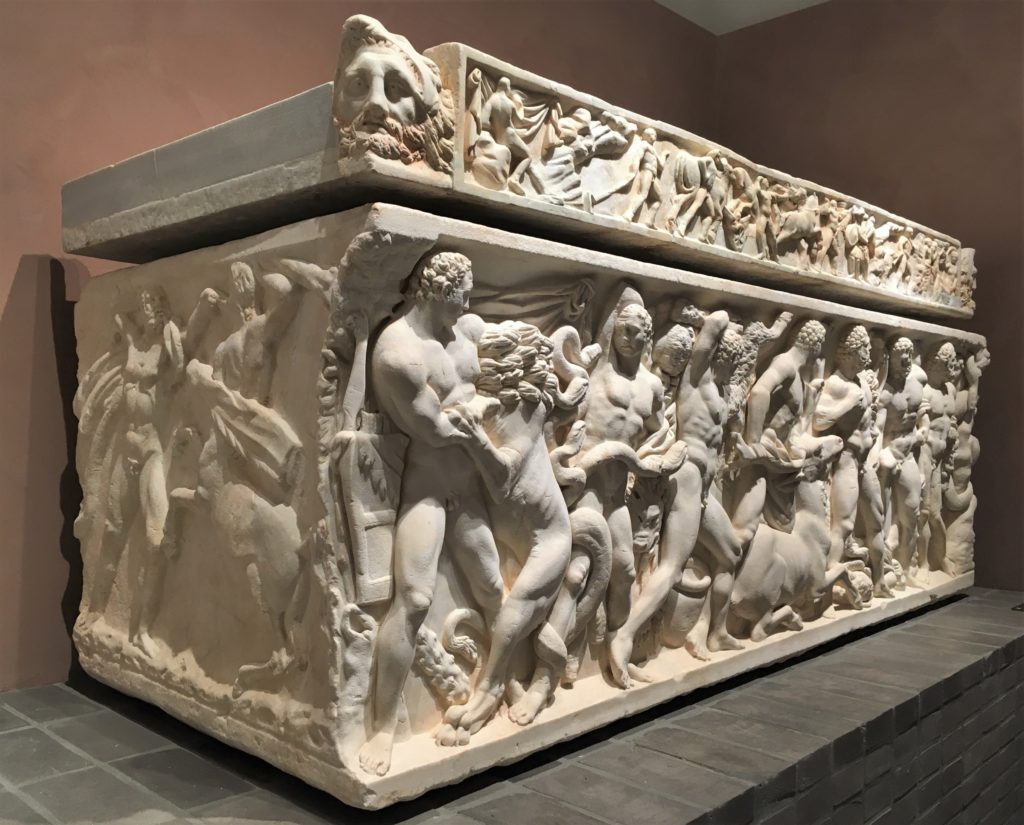
The bright monochrome of Carrara marble is flanked by works carved in colored marbles from different corners of the Roman Empire.
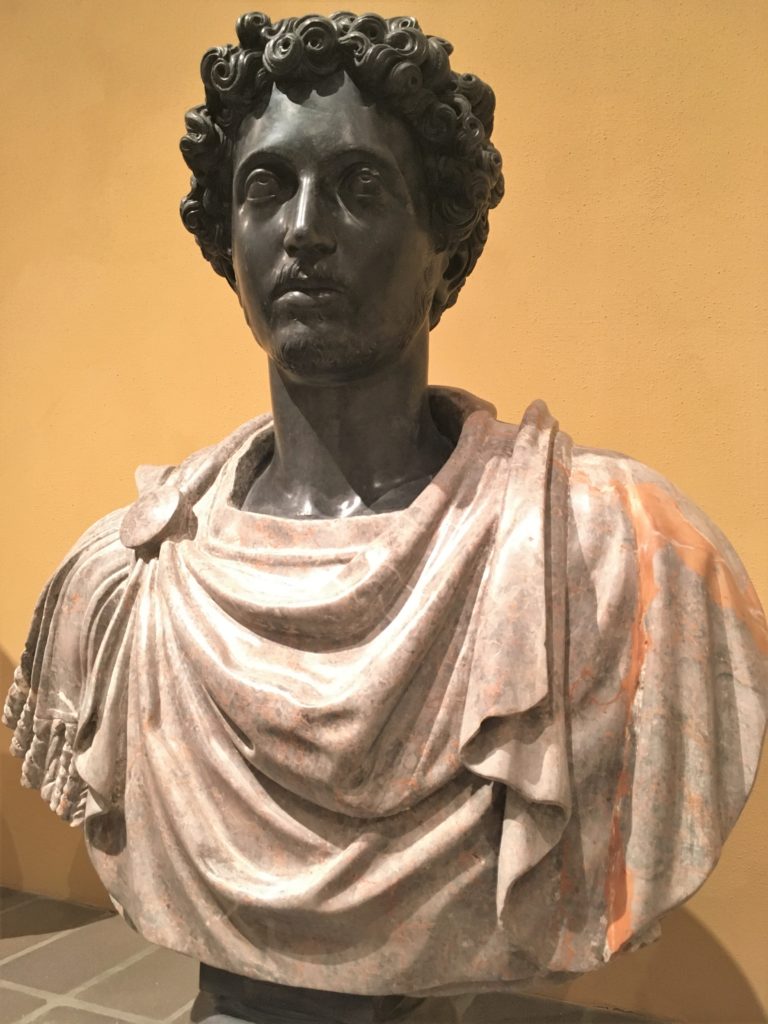
Another exceptional work is the “Ulysses under the ram”, which portrays the astute Homeric hero fleeing from the cave of Polyphemus.
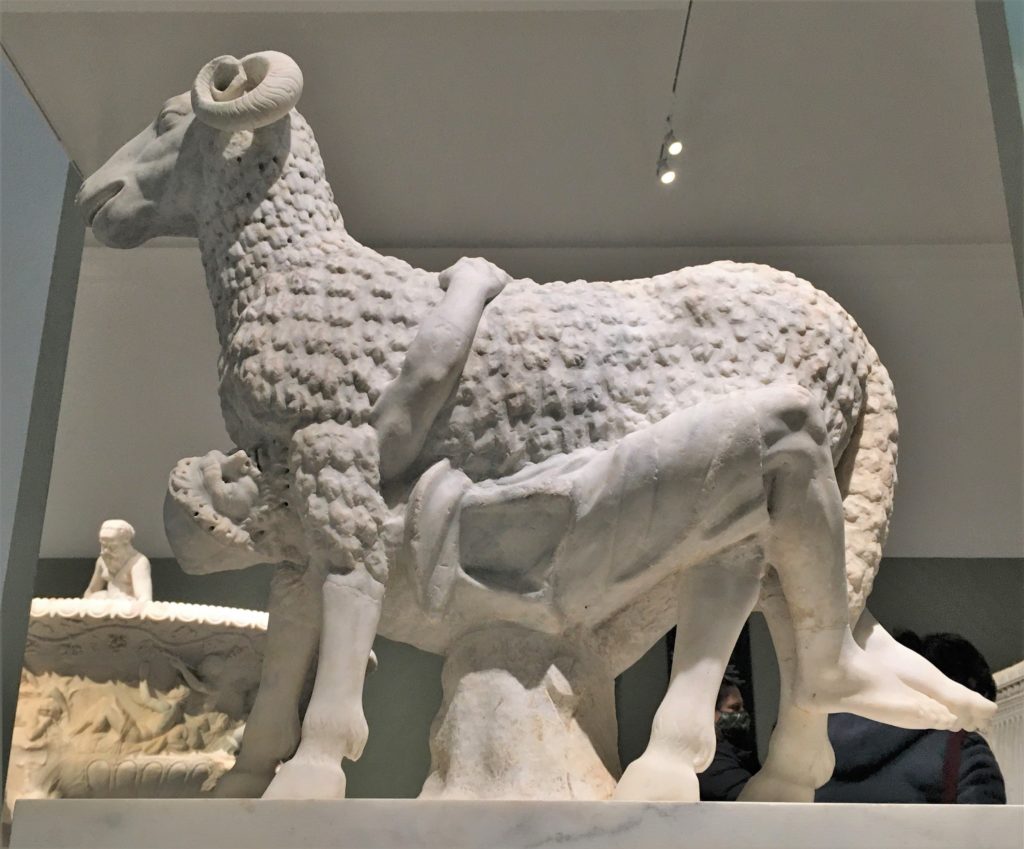
We complete this review of the Torlonia Marbles on display in Rome with the statue of Hercules positioned in the last room.
The work particularly struck us not only for its harmony but also for the extraordinary restoration work that reshaped the figure of the mythological hero by assembling together one hundred different pieces, between ancient and modern.
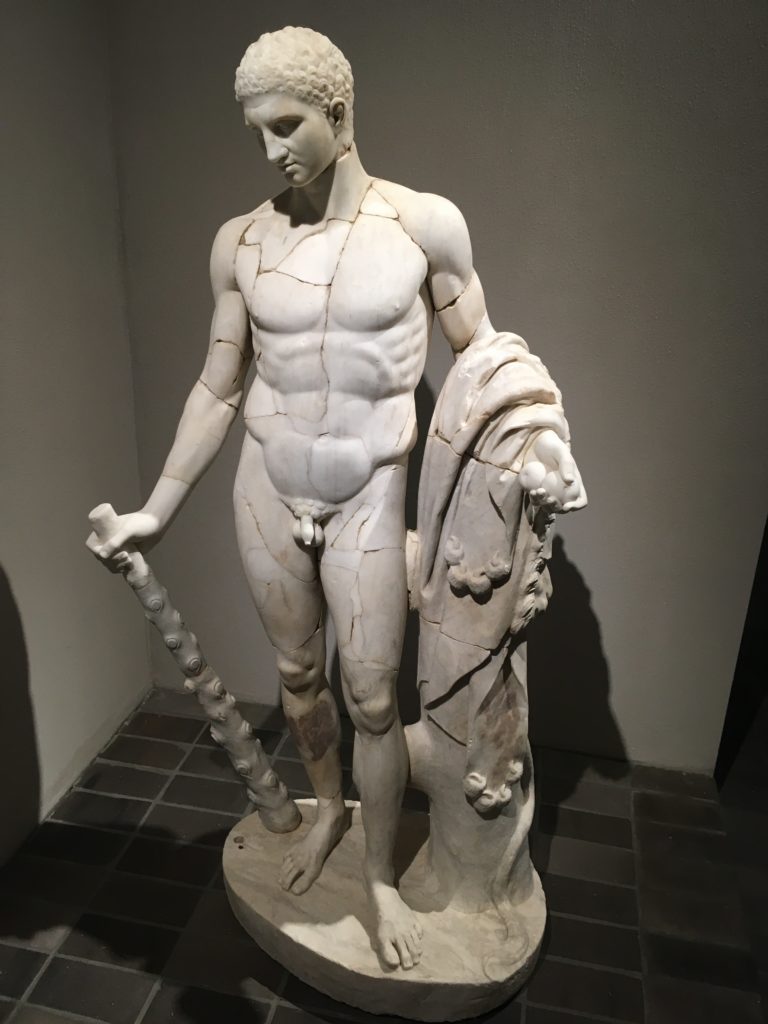
Torlonia Marbles: the first step on a new path
The Torlonia Marbles Exhibition at the Capitoline Museums represents the first step on a new path.
After Rome, the “Marmi Torlonia” will travel on an international tour to show the world one of the most prestigious private collections of classical statuary.
In the meantime, the Torlonia Foundation – in concert with Mibact and local institutions – is identifying the most suitable solution for a permanent exhibition site for the collection.
We will keep you updated on the developments of the story, in the hope that the Torlonia Marbles will soon find a home worthy of their history.
Finally, as always, we invite you to contact us to schedule a private tour of the exhibition with our expert guides specialized in art history and conservation of cultural heritage.
Enjoy your visit!
[vcex_divider color=”#dddddd” width=”100%” height=”1px” margin_top=”20″ margin_bottom=”20″]
Full information to visit the Torlonia Marbles exhibition at Villa Caffarelli (Capitoline Museums):
- Address: Capitoline Museums – Villa Caffarelli, Rome
- Dates: 14th October 2020 – 29th June 2021
- Times: every day 9.30-19.30, 24 and 31 December 9.30-14.00. Last admission one hour before closing.
Closed: December 25th, January 1st, May 1st - Tickets and Reservations: Online booking recommended but not mandatory
- Website: http://www.museicapitolini.org/it/mostra-evento/torlonia-marbles
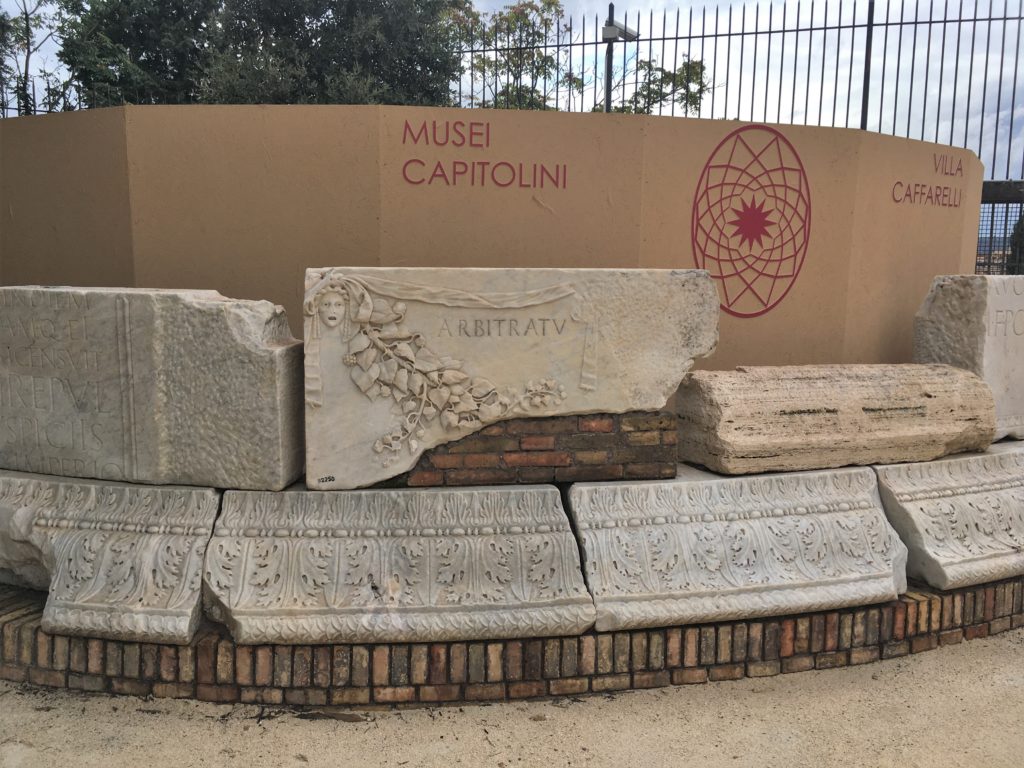

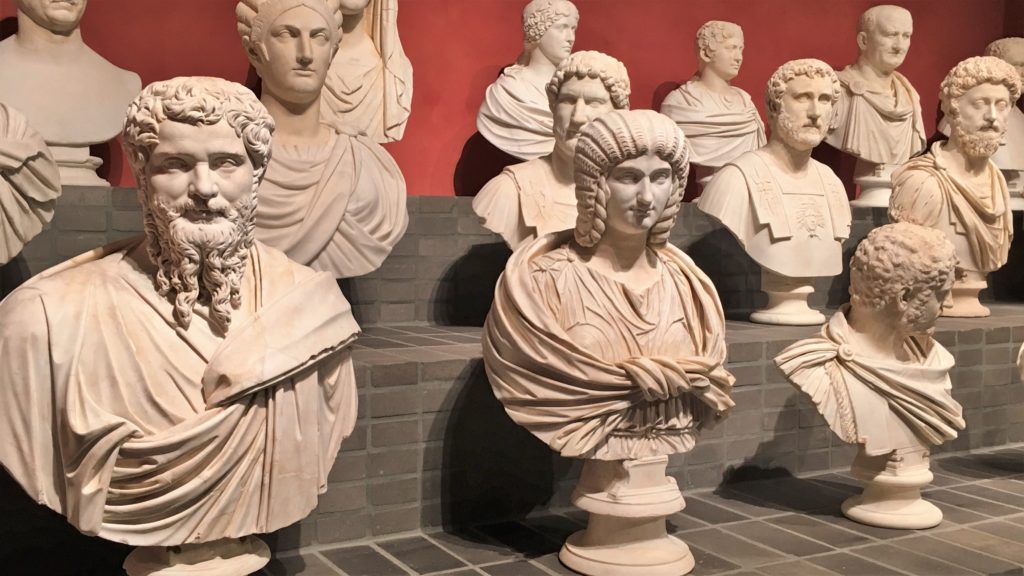
 WhatsApp us
WhatsApp us